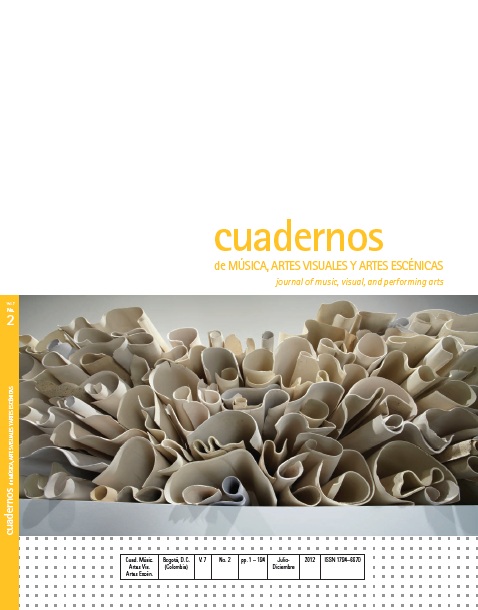Abstract
En el presente artículo, se hace un análisis crítico de lo que se ha publicado sobre el pito atravesao, también conocido como caña de millo, basado en un diagnóstico primordialmente cronológico sobre el estado del arte relativo a este tema. Luego, se analizan y, en lo posible, se aclaran tres complejos temas frecuentemente abordados en los escritos sobre el instrumento: la errónea asociación de la cumbia con el conjunto de gaitas, los posibles antecedentes de la caña de millo y su presencia y vigencia en diferentes regiones de la Costa Atlántica colombiana. Finalmente, se exhorta a la comunidad académica al estudio de este instrumento y su música, de singular importancia en la región caribe del país.This journal is registered under a Creative Commons Attribution 4.0 International Public License. Thus, this work may be reproduced, distributed, and publicly shared in digital format, as long as the names of the authors and Pontificia Universidad Javeriana are acknowledged. Others are allowed to quote, adapt, transform, auto-archive, republish, and create based on this material, for any purpose, provided the authorship is duly acknowledged, a link to the original work is provided, and it is specified if changes have been made. Pontificia Universidad Javeriana does not hold the rights of published works and the authors are solely responsible for the contents of their works; they keep the moral, intellectual, privacy, and publicity rights.
Approving the intervention of the work (review, copy-editing, translation, layout) and the following outreach, are granted through an use license and not through an assignment of rights. This means the journal and Pontificia Universidad Javeriana cannot be held responsible for any ethical malpractice by the authors. As a consequence of the protection granted by the use license, the journal is able to publish retractions or to correct information already published. Publishing contents in this journal does not generate royalties for contributors.


